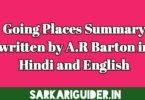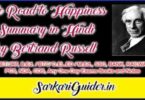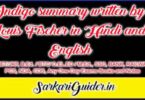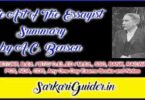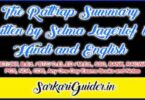Romantic movement in English poetry
Q. Write a note on the Romantic movement in English poetry.
Or
Discuss how the Romantic movement was both a revoltandarevival.
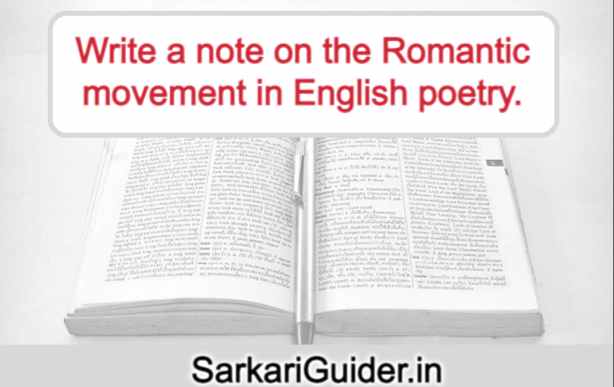
Romantic movement in English poetry
Romantic movement in English poetry – The Romantic Movement can be said to have begun with the publication of the ‘Lyrical Ballads’ in 1798 by Wordsworth and Coleridge. The romantic traces are found earlier in the poets of later 18th century, for example Thomson, Collins, Gray and Cowper. The Romantic Movement brought about a change both in the content and style of poetry which were unlike the poetry written in the 18th century. It was both a kind of revival and revolt.
The Romantic poet’s concept of Nature was quite different from the Neo-Classical poets. The Romantics laid stress on the beauties of Nature and also felt the presence of the divine in it. Wordsworth has expressed his views beautiful in this poem ‘Tintern Abbey” when he tells his sister “Nature never did betray the heart that loved her”. The poets of the 18th century dealt with human nature for example Pope in his “An Eassay on Criticism” writes,
“True Wit is Nature to advantage dressed;
What oft was thought, but ne’er so well express’d;”
The 18th century poetry was the poetry of town and their chief characters were drawn mainly from the upper class people for e.g. Pope’s “Rape of the Lock”. On the contrary we find that the Romantics moved away from the narrow confines of towns and cities and wrote about the countryside. The characters in their poem were not nobles and ladies of upper classes but ordinary common people. This is amply borne out in the poems of Wordsworth for example when he writes about the “The Solitary Reaper”. Wordsworth believed Nature to be the best teacher, which is expressed in poems like “Three Years She Grew” where Lucy is brought up under the guidance of Nature and she grows up into a perfect lady. In the poem “Tables Turned” he writes,
“One impulse from the vernal wood
May teach you more of man
of Moral evil and of good
Than all the sages can.”
The ideals of the French Revolution ‘liberty’, ‘equality’ and ‘fraternity greatly contributed to the rise of humanitarianism. These ideals find echo in the poetry of Wordsworth, Shelly and Byron.
Romantic poetry laid great emphasis on the freedom of the individual.
In Wordworth’s and Byron’s poetry we find that they stress on the equality of Man.
The revolutionary aim of Wordsworth and Coleridge is clearly brought
out in the second edition of ‘Lyrical Ballads’ published in 1800 thus, “the principal object proposed in these poems was to choose incidents and situations from commun life and to relate or describe them throughout in the selection of the language really used by men and at the same time, to throw over them a certain colouring of the imagination whereby ordinary things should be presented to the mind in an unusual aspect.”
The revolt was not only evident in the content of poetry but also its style. The Neo-Classical poets used inane phraseology and the heroic couplet to express their feelings. Whereas the Romantic poets used the language of the common man and expressed their emotions in charming lyrics. Shelley and Wordsworth were the great lyrical poets of Romantic Age. The classicists laid emphasis on objectivism whereas the Romantics were more subjective.
The Supernatural element is evident in Romantic Poetry. The Romantic poets were attracted by fairy-tales, ghosts and witches. The quality of supernaturalism is evident in the poem, “The Rime “The Ancient Mariner” written by Coleridge while the element of fairy-tale finds expession in Keat’s poem “La Belle Dame Sans Merci”.
The Romantic Movement was not only a ‘revolt’ but it was also a “revival’. The Romantic poets turned to the Middle Ages to seek inspiration. This is evident in the poems of Keats, Shelley and Coleridge.
In conclusion it can be said that the Romantic poets rose in revolt against the principles and practices of Neo-Classical Literature.
Important links
What is poetry? What are its main characteristics?
Debate- Meaning, Advantage & Limitations of Debate
Sarojini Naidu (1879-1949) Biography, Quotes, & Poem Indian Weavers
Charles Mackay: Poems Sympathy, summary & Quotes – Biography
William Shakespeare – Quotes, Plays & Wife – Biography
Ralph Waldo Emerson – Poems, Quotes & Books- Biography
What is a lyric and what are its main forms?

